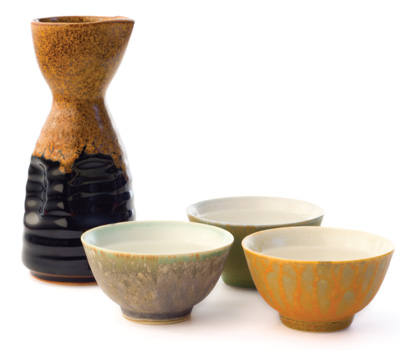

Amazingly, without missing a single harvest, Suisen is back. And so is the Japanese sake industry, which could have been devastated by the double whammy of a tsunami that killed more than 15,000 and damaged more than 125,000 buildings, followed by nuclear meltdowns in the rice-growing area of Fukushima.
Four months after the tsunami, Iwate Meijo, a large brewery 30 kilometers away, offered Suisen the use of one of its buildings. Suisen’s biggest challenge then was the water.Much of sake’s character comes from the local water; Suisen had been made from mineral-rich water that flowed from an underground mountain source. Now, it would have to be brewed with milder water.
But the key concern in most sake drinker’s minds isn’t minerality or its absence: It’s radiation.
Because rice is Japan’s most important food, public attention there has focused on the safety of the rice crop, which means there has been both government and private testing. One brewery, Kiuchi Shuzo in Ibaraki prefecture—about 130 kilometers from Fukushima—went to the trouble of posting its clean bill of radiation health on its website in both Japanese and English.
Meanwhile, breweries in significant sake-producing regions like Hyogo and Kyoto are taking pains to point out how far west they are of Fukushima in a country where weather patterns move west to east.
The bad news is that there might still be some radiation in rice grown in the immediate vicinity of the Fukushima plant. To test how the sake brewing process interacts with radioactivity, the National Research Institute of Brewing performed an experiment in which they brewed sake with rice at the legal limit of contamination. The first step in brewing sake is to polish the rice, removing much of the outer coating. The NRIB made honjozo sake—with the outer 30 percent polished away.
The polishing removed 80 percent of the radioactive cesium. The normal step of washing the rice before brewing removed one-third of the remaining cesium. Still, measurable levels of radioactivity made it to the finished batch.
Reports like this could have been devastating to the Fukushima sake industry. Instead, Japanese consumers have rallied to support sake brewers in northern Japan—sometimes at the expense of breweries elsewhere. While sake sales in Japan are about the same as a year ago, Fukushima sake sales have risen by 9 percent, and sales from nearby northern prefectures are up even more. Iwate sakes are up 17 percent, and in Miyagi, a rural region just north of Fukushima that’s best known for the quality of its eating rice, sake sales are up 39 percent.
The demand is being driven by sympathy for tales like that of Fukushima’s Tomizawa brewery. The 300-year-old brewery was damaged by the earthquake, and the radiation levels were high enoughthat the government said they could no longer use it.
Mari Tomizawa and her brother Mamoru crawled through the wreckage of the brewery to secure a precious sample of yeast that had been used for generations. The yeast was tested by the government and proclaimed radiation-free, causing their father Shuhei Tomizawa to break down in tears. They’re now producing sake in space borrowed from a brewery in a less-affected part of the same prefecture. Shuhei Tomizawa said in December of his new batch of sake, made with the rescued yeast: “The aroma and the taste bring me back to my hometown.”
And Suisen, working in its new borrowed facility, released its first sake in October, just two months after returning to life. The sake was called Yukikko (“Snow Child”) and it quickly sold out.
This story was featured in W&S February 2012.
W. Blake Gray lived in Tokyo for eight years before moving to San Francisco, where he became an award-winning wine and spirits journalist. He is the US Editor for Wine Searcher and runs the Gray Report blog. He still travels to Tokyo frequently to drink and eat and drink.
This story appears in the print issue of February 2012.
Like what you read? Subscribe today.















